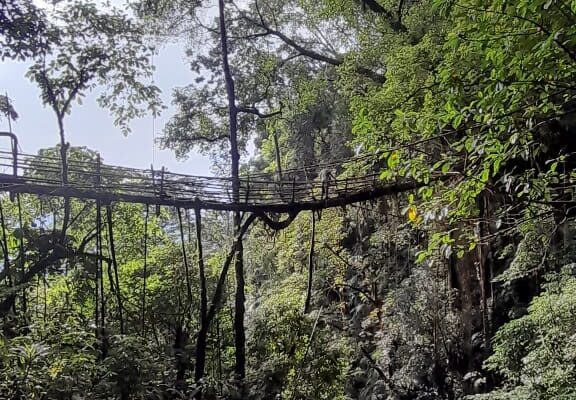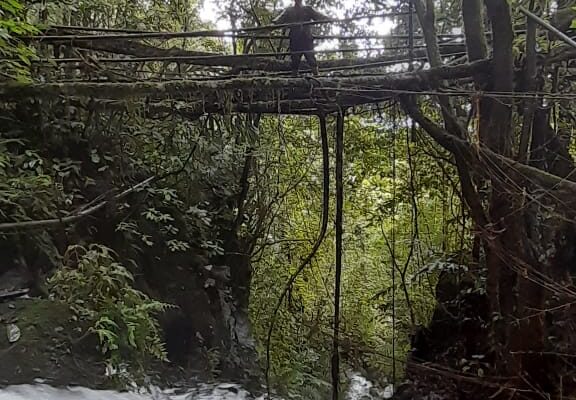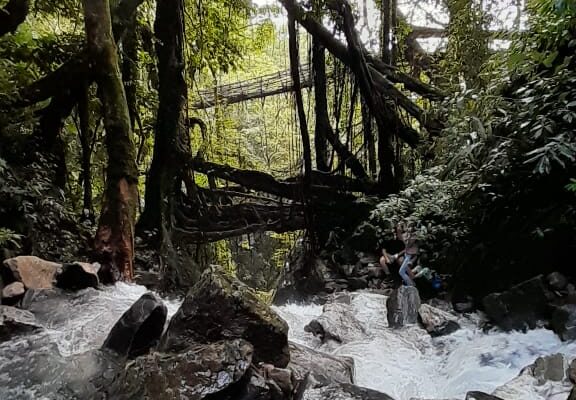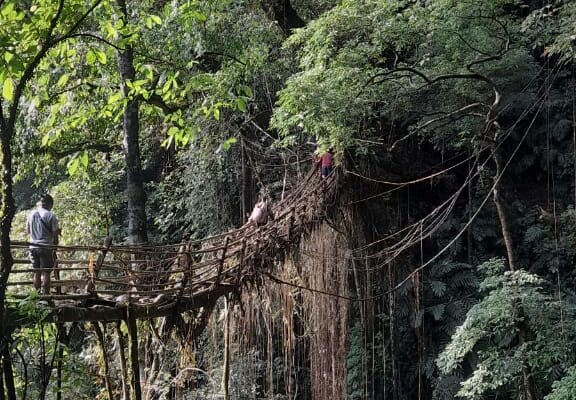Experience
The "Living Root Bridges of Meghalaya" a man-made marvel of the people
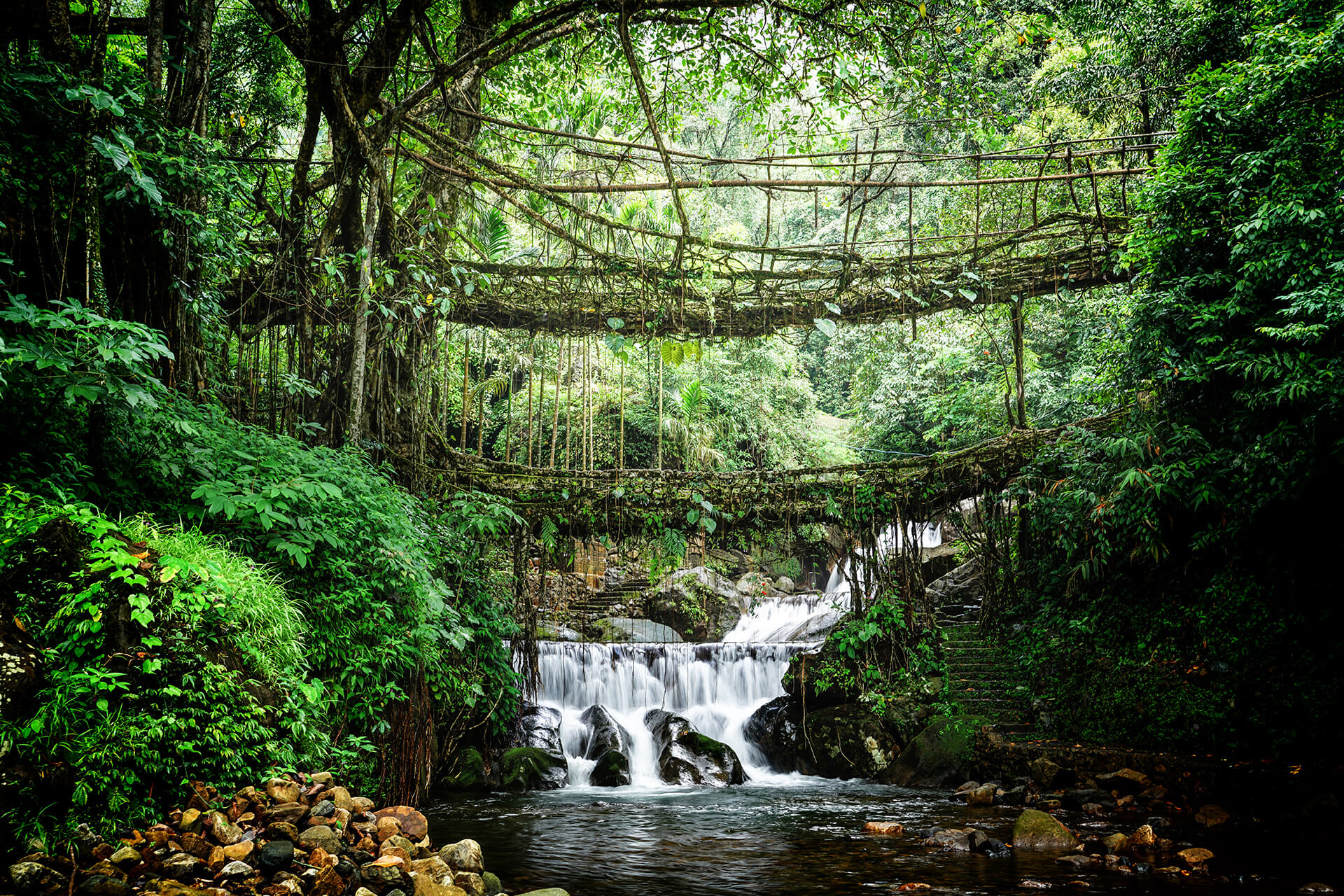
The living root bridges are one of Meghalaya’s most beautiful tangible heritage sites. These sites have recently been added to the UNESCO world heritage site list. They are made of intertwined roots which are a sort of magic, but they aren’t imaginary. These bridges have been built for centuries by the indigenous people of the land(Khasis and the Jaintias). They have also been used by these people to cross the overflowing rivers during the monsoon season. Not only is it a naturally built ecosystem of local flora but it also symbolizes the relationship and knowledge that the local people have over their region and the cultural significance that it holds for them. Under ideal conditions, a root bridge is thought to be able to persist for hundreds of years. These bridges frequently rise 50 to 100 feet in the air. The state’s longest living root bridge is said to be a whopping 175 feet in length. There are approximately 100 or so known living root bridges across different villages. Some of the most popular of these living root bridges are in Nongriat, Cherrapunji, Nongbareh and other nearby locations.
What is a living root bridge?
These are naturally built bridges mainly built by firstly planting two rubber trees of the Ficus elastica on either side of a river. These trees usually take about a decade to grow and generate secondary aerial roots. These roots can then be weaved to construct sturdy structures and then form enormous roots for reinforcement. Nongbareh: Next, the local bridge builders of the region would then direct the roots of the bridge by weaving a bamboo scaffolding. This scaffolding is used to gently push the aerial roots across the river until they are planted on the opposite side after being weaved onto it. Every two years, they change the bamboo scaffolding since the moisture and humidity might damage it. The roots ultimately become thicker and intertwine with those of a different tree on the other side. Over the period of 20 to 30 years, they continue to guide the roots on the existing bridges until the roots can stand on their own. At that point, you have live root bridges that must be continuously checked and cared for.
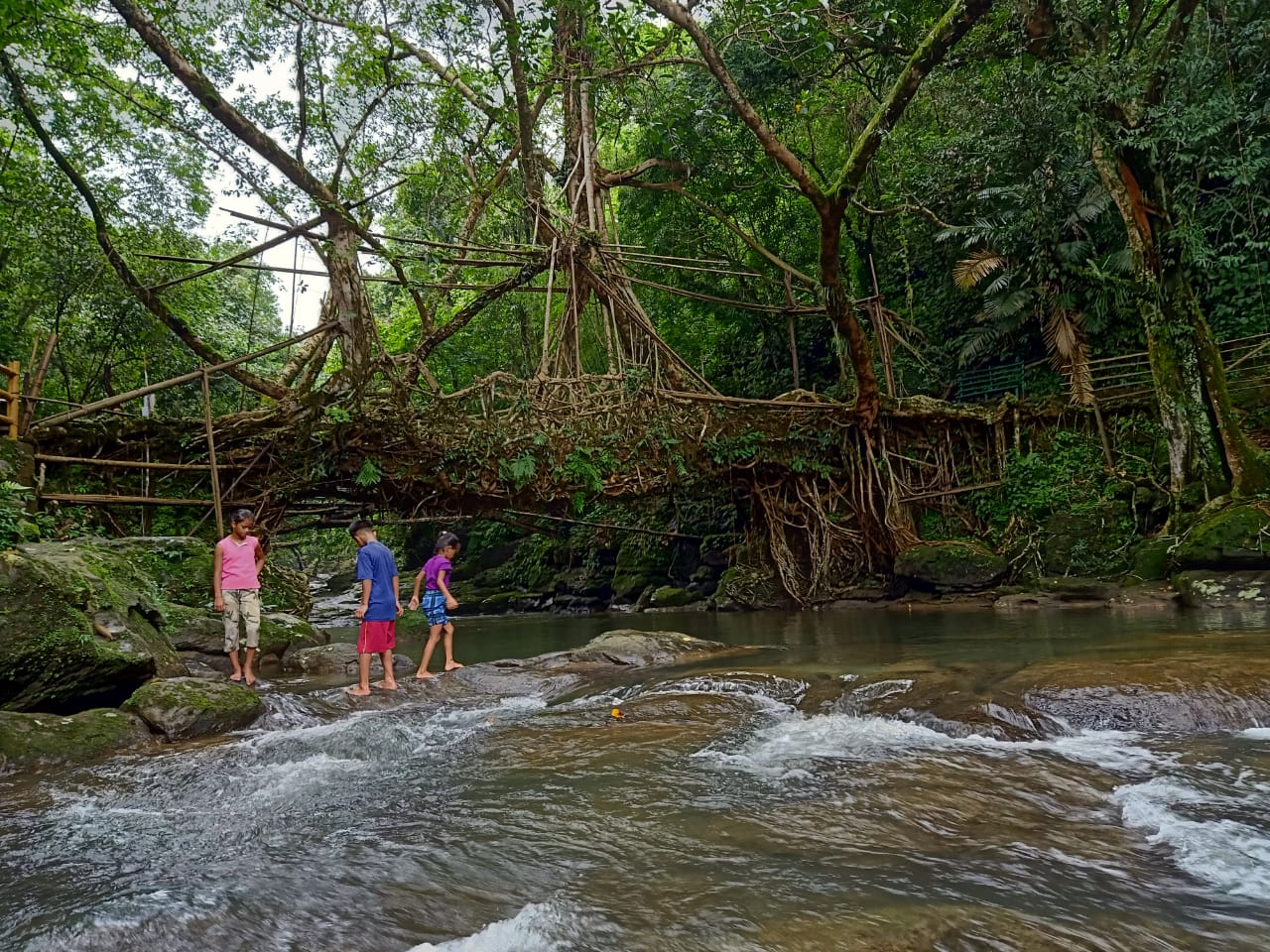
Popular Living Root Bridges:
Once they have been carefully grown and cared for, the living root bridges can be found in these regions of Meghalaya:
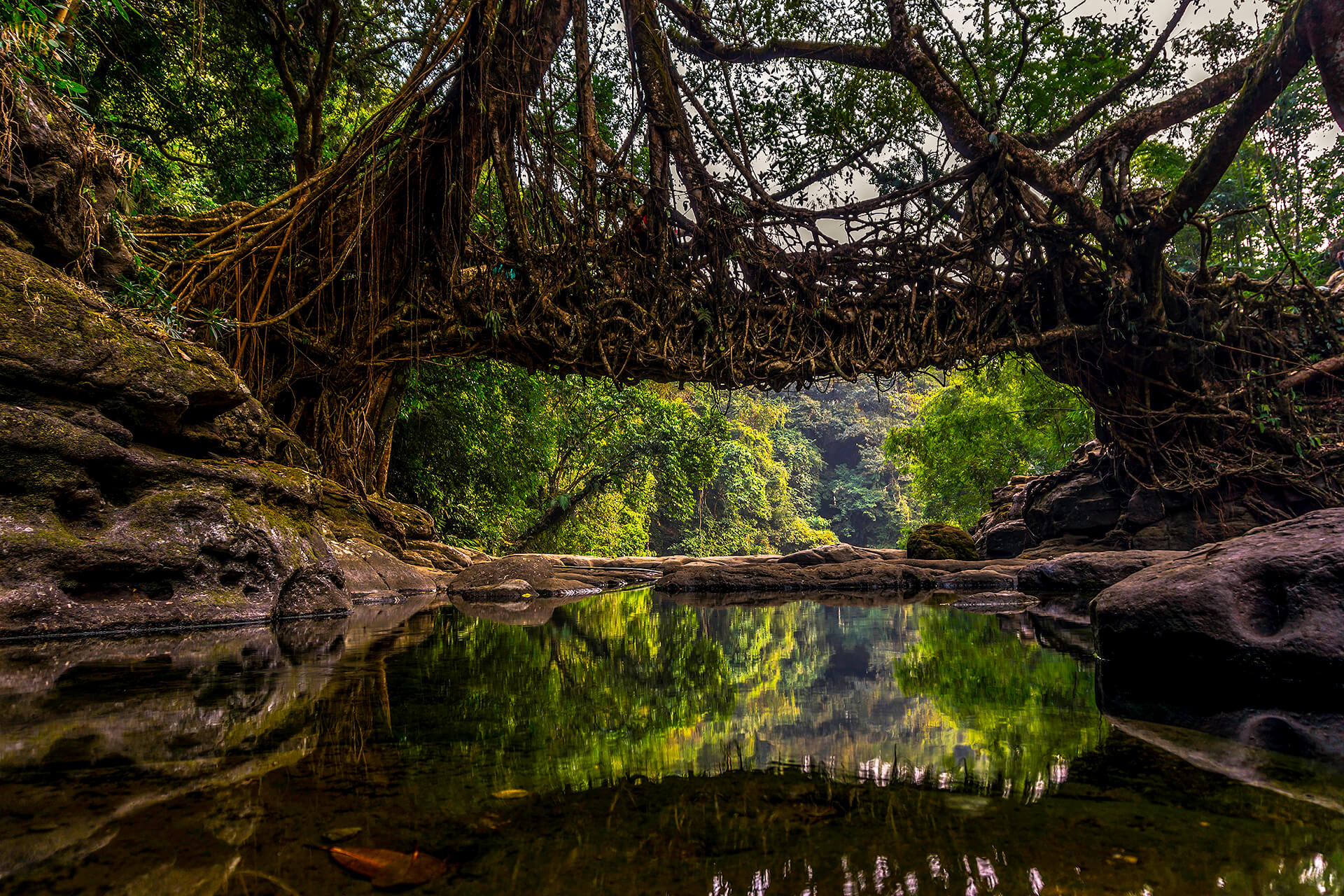
Duration of the experience: Day visit 8 am to 5 or 6 pm.
Best time to visit: Autumn & Winter (October to March)
Language: English and Khasi
Nongbareh:
The Nongbareh living root bridge, which is located in the centre of the town, is recognised for its mesmerising beauty. This bridge has a double-span structure which bisects the Amayalee river and a road going to the river Umngot. This bridge is known for having a remarkable structure. It joins the banks of two rivers and provides an architectural elegance that is unique in its field. The bridge is an ancient one that is also said to be more than 100 years old.
Another area below this settlement known as Shmia Syntem is another lovely sight that has attracted many tourists. It takes around an hour to descend to the riverbed and is located along the Umngot river pathways.
Location: East Jaintia hills.
Nearest town: Nongbareh, Lyntiar.
Host: Costlymore P Hayong, local guide, (+91 7005085765). / Kudengrim Tourism Office at Nongbareh, Lyntiar.
Distance: 215km from Guwahati Airport.
110 km from Shillong Airport.
104km from Shillong.
Local food shops are also available nearby
Padu:
The Padu Bridge which is located about 10 km away from Amlarem is among the most beautiful though one of the little-known living-root bridges in Meghalaya. The bridge’s unusual aerial roots, which look to be supported by some sort of reinforced component are its main identifying features. Another unseen phenomenon that seems to have supported the entire structure is the concrete column on the right side of the Padu Bridge.
There are also various Orange Groves and waterfalls along with the village which are also beautiful landmarks for sightseeing.
Location: East Jaintia hills.
Nearest town: Nongtalang Village.
Host: Costlymore P Hayong, local guide, (+91 7005085765) / Kudengrim Tourism Office at Nongbareh, Lyntiar.
Distance: 208km from Guwahati Airport.
103km from Shillong Airport.
98km from Shillong.
Local food shops are also available nearby
Visit the orange orchards
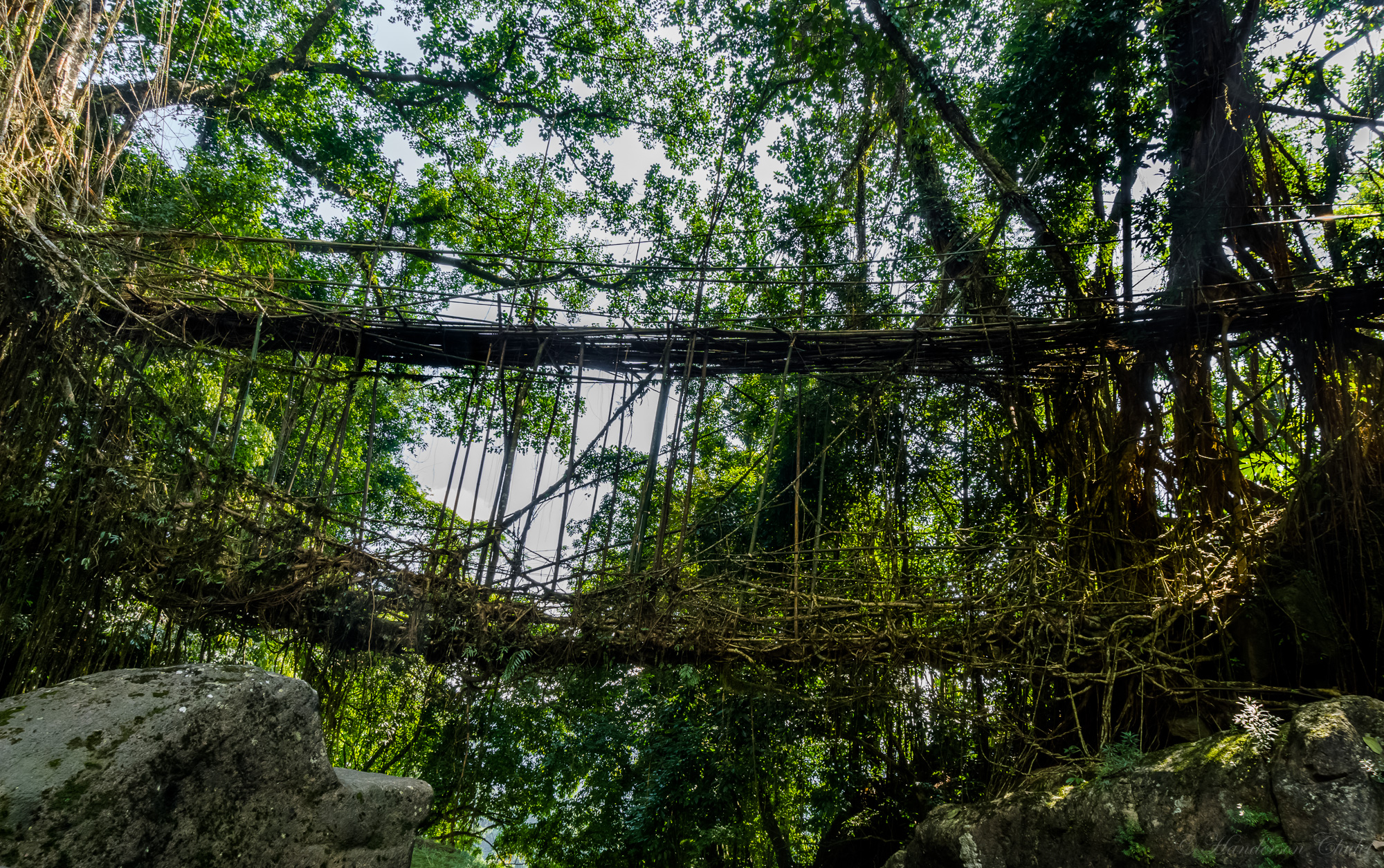
Duration of the experience: Day visit 8 am to 5 or 6 pm.
Best time to visit: Autumn & Winter (October to March)
Language: English and Khasi
Sohra (Cherrapunji):
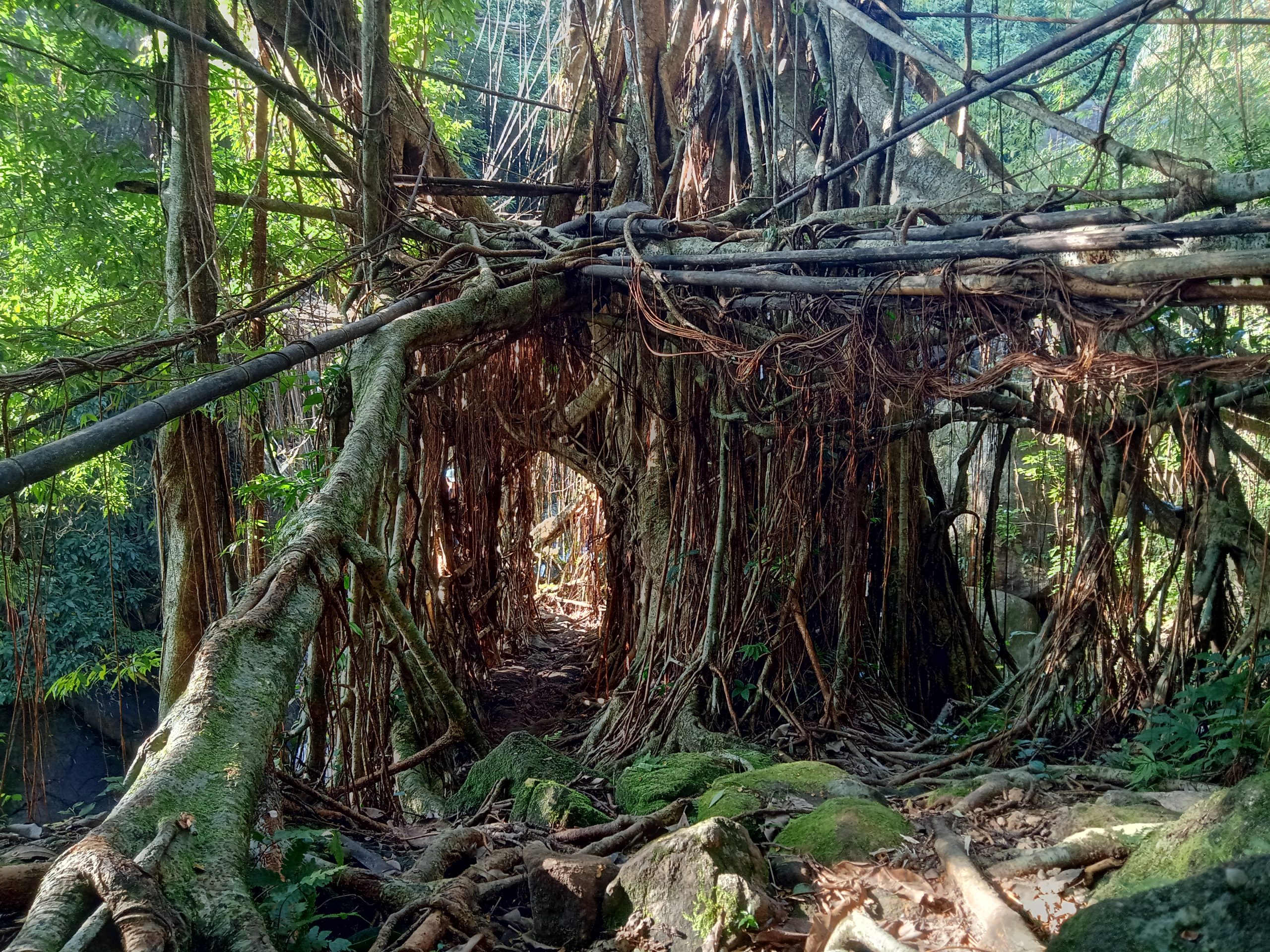
Duration of the experience: Day visit 8 am to 5 or 6 pm.
Best time to visit: Autumn & Winter (October to March)
Language: English and Khasi
Despite being labelled as “the rainiest place on earth”, Sohra (Cherrapunji), also hosts the double-decker and single-decker root bridges which are a must-to-be-seen. The settlements of Sohra, to the east, are home to several root bridges. These bridges are supposed to be around 30 to 50 metres long and are a comprehensively lengthy construction made of infused roots. The area surrounding the Sohra (Cherrapunji) bridges is breathtaking and a perfect representation of the area’s fantastical splendour.
If you’re an explorer, or if you are interested in caves, going caving in Sohra (Cherrapunji) is something you should certainly do. This is because Sohra (Cherrapunji) is home to some of the largest caves in India. Ziplining is also another interesting activity you can partake in at Mawkdok which is about 27 km away from the main Sohra (Cherrapunji) area. This is an ideal spot to do so since it offers an exhilarating journey and the chance to enjoy the area’s breathtaking natural beauty.
Location: East Khasi hills.
Nearest town: Sohra Township.
Point of contact: Kerlang Khonglam, local guide, (+8259846278) / Meghalaya Tourists Guide Agency at Saitsohpen, Sohra.
Distance: 163km from Guwahati Airport.
80 km from Shillong Airport.
53km from Shillong.
Local food shops are also available nearby
Kudeng Rim and Kudeng Thymmai:
One of Meghalaya’s most beautiful vistas can be found from the Kudeng Thymmai and Kudeng Rim Bridge. Both of them offer a beauty that hasn’t yet been fully captured. The actual bridges are rather long and both the bridges are placed at quite a distance above the rivers they were built on. These stunningly beautiful bridges are home to several breathtaking vistas, including a waterfall with crystal clear blue water.
Nearby attractions include scenic views of the Krangsuri Falls which is 24km (30 mins) and the historic Nartiang Village which is about 70km (2 hours) away from Kudeng Rim.
Location: East Jaintia hills.
Nearest town: Nongbareh, Lyntiar.
Host: Costlymore P Hayong, local guide, (+91 7005085765). / Kudengrim Tourism Office at Nongbareh, Lyntiar.
Distance: 220km from Guwahati Airport. (Kudeng Rim)
218km from Guwahati Airport. (Kudeng Thymmai)
117km from Shillong Airport. (Kudeng Rim)
114km from Shillong Airport. (Kudeng Thymmai)
Local food shops are also available nearby
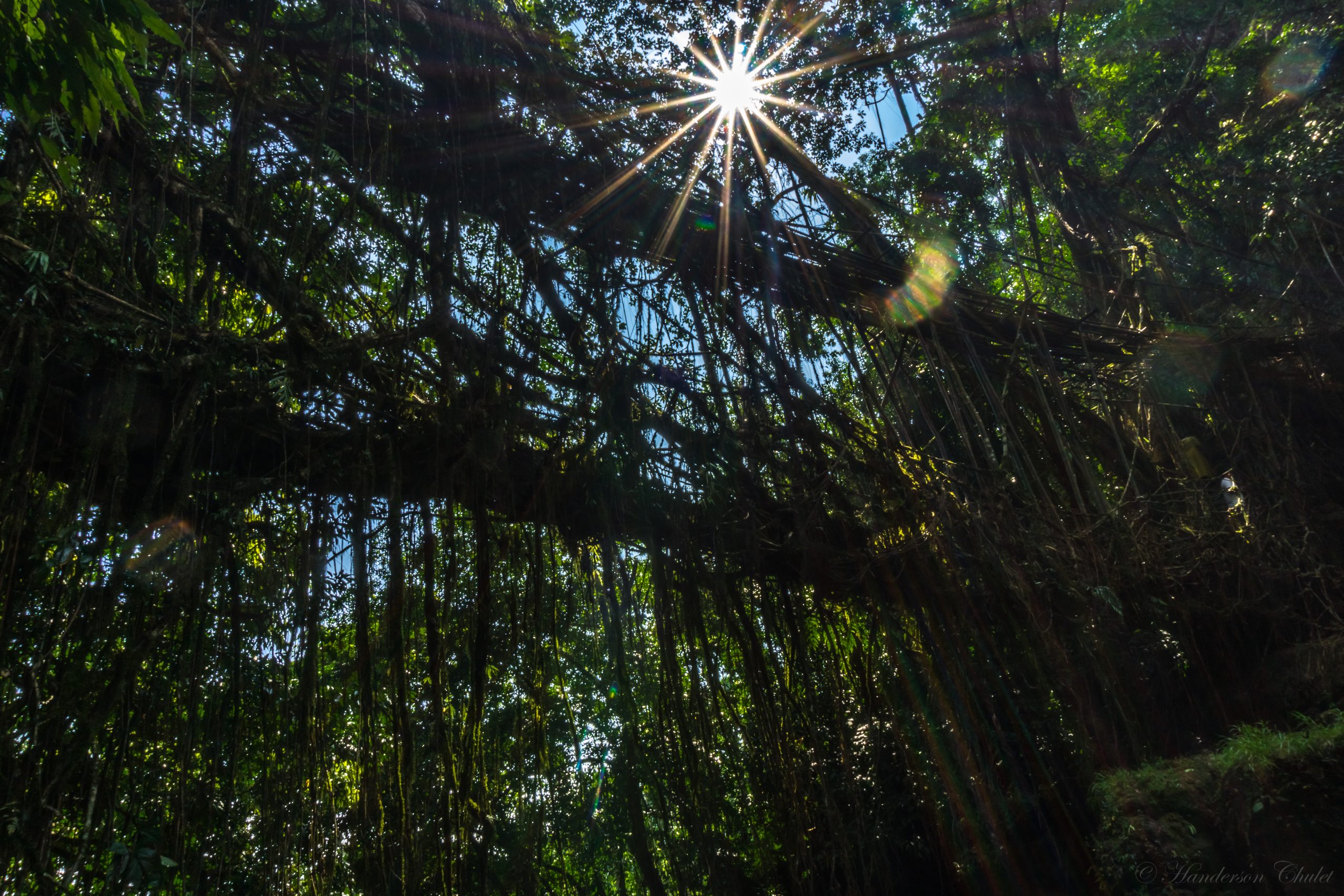
Duration of the experience: Day visit 8 am to 5 or 6 pm.
Best time to visit: Autumn & Winter (October to March)
Language: English and Khasi
Dawki (Mawlynnong and Shnongpdeng):

Duration of the experience: Day visit 8 am to 5 or 6 pm.
Best time to visit: Autumn & Winter (October to March)
Language: English and Khasi
The first of the living root bridges is a single-level roots bridge that may be accessed on one of two routes around Mawlynnong. You may access the bridge by descending a flight of steep stairs which is located approximately 3 kilometres before Mawlynnong. As with the other living root bridges, this also proves to be a miracle of human engineering in nature.
The Living root bridge at Shnongpdeng however is one where you will undoubtedly have a great time mixed with some excitement. You can enjoy the mesmerising images of the lovely boats drifting aimlessly in the clear waters. The strange beauty is hypnotic and leaves a strong impact that will linger for days.
The little Indian village of Mawlynnong is not far from the border with Bangladesh. To get the best perspective of the area, including Mawlynnong, and a good picture of this area of Bangladesh, you can visit the Sky Walk, a distinctive building that offers a perspective of Bangladesh, a neighbouring nation. Other than these main attractions, other activities in the area of Shnongpdeng include boating, camping and other related ventures.
Location: East Jaintia Hills.
Nearest town: Dwaki Township.
Point of contact: Lari Kongthohrem, local guide, (+91-9366275211).
Distance: 181 km from Shillong. (Dawki)
120 km from Shillong Airport. (Dawki)
Local food shops are also available nearby
Why are these bridges important?
These bridges carry major significance to the farmers and villagers of the region. This is so because it enables them to get to their respective plantations, homes or areas where they need to deliver products.
This bridge also carries a big cultural significance. This is so as the entire community must collaborate to design, manage, and maintain each bridge. They also take more than one generation to work on them. This is done so that these bridges can also be used by the future generations of the people who are presently gently tending to the younger bridges. Many residents in the surrounding areas of these bridges have also now become financially independent because of them.
These bridges are also crucial for biodiversity. This is because they support pollinating insects, promote the growth of moss, and provide a habitat for squirrels and bird nesting places. By turning the trees into bridges, the Khasi people have been successful in creating many places where animals may cross rivers securely. Bark deer and clouded leopards are known to utilise root bridges to cross gaps in the forest. These bridges not only add to the beauty but also support the growth and well-being of the area in which they are located.
Frequently Asked Questions:
Who constructs the living root bridges?
The Khasi and Jaintia people of Meghalaya construct these bridges using an Indian rubber (Ficus elastica) tree’s roots which are woven into suspension bridges across two rivers.
How old is a living root bridge?
Living root bridges are known to be over 100 years old if properly maintained and kept under the right conditions.
Is the journey to these bridges difficult?
Although the steps which pave the way to most of these bridges are well built, the journey can be rather arduous and steep. One must be prepared to trek or climb up and down these steps for at least 30 minutes.
Are there any other countries with living root bridges?
As of the current knowledge today, India is the sole host of all the living root bridges in the world with the majority of them being in the Northeastern state of Meghalaya.

